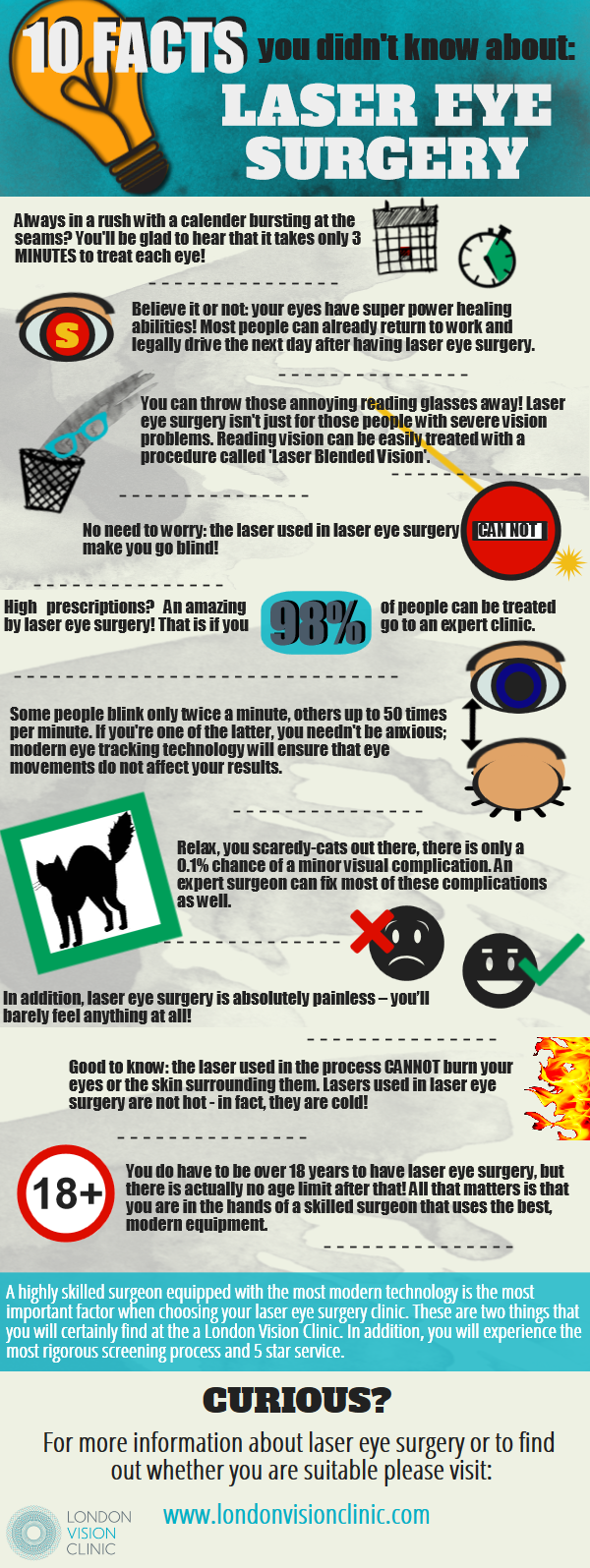Material Produce By-Acosta Finch
When considering vision adjustment options, you might find yourself weighing Refractive Lens Exchange (RLE) against cataract surgical treatment. Each procedure has its own special benefits and downsides, specifically when it concerns set you back and insurance coverage. RLE can be costlier and typically isn't covered by insurance policy, while cataract surgery typically is. Comprehending these financial aspects is essential, however there's even more to think about prior to choosing that impacts your vision.
Understanding Refractive Lens Exchange (RLE)
Recognizing Refractive Lens Exchange (RLE) can be essential if you're taking into consideration alternatives for vision correction.
RLE involves changing your eye's natural lens with an artificial one to enhance vision. It's similar to cataract surgical treatment however isn't limited to those with cataracts. You could pick RLE if you're experiencing presbyopia, hyperopia, or nearsightedness and wish to lower your reliance on glasses or contacts.
During the procedure, your surgeon removes the over cast or clear lens and inserts a premium intraocular lens customized to your requirements. Healing is commonly quick, and numerous clients observe improvements in their vision practically promptly.
Checking Out Cataract Surgery
Cataract surgery offers a straightforward remedy for bring back clear vision when cataracts shadow your all-natural lens. Throughout the treatment, your cosmetic surgeon removes the gloomy lens and changes it with a clear man-made lens, called an intraocular lens (IOL).
You'll typically receive local anesthetic and might be awake, although you won't feel discomfort.
The surgery normally takes around 15 to thirty minutes, and the majority of clients see boosted vision practically instantly. You might experience some light pain or blurriness, yet these signs and symptoms typically resolve quickly.
Post-surgery, you'll need to follow your medical professional's directions for recuperation, consisting of using suggested eye decreases and attending follow-up consultations.
Contrasting Expenses and Insurance Coverage
When taking into consideration eye surgical procedures like RLE or cataract surgical treatment, it's important to look at the prices and insurance coverage entailed.
RLE usually sets you back more than cataract surgical procedure, often varying from $3,000 to $5,000 per eye, depending upon the innovation used. On the other hand, cataract surgical procedure normally sets you back between $2,500 and $4,000 per eye.
Insurance protection can vary dramatically. Many insurance policy strategies cover cataract surgery given that it's regarded medically necessary, yet RLE may not be covered, as it's commonly thought about optional.
Constantly contact your insurance policy supplier to recognize your advantages. Furthermore, see this offer layaway plan or funding alternatives for both treatments, making them a lot more available.
Ultimately, recognizing these variables can assist you make an educated decision.
Conclusion
In selecting between RLE and cataract surgical procedure, it's essential to consider the costs and insurance policy protection. RLE supplies a potential solution for vision modification yet typically features higher out-of-pocket costs and restricted protection. On https://docs.google.com/spreadsheets/d/1v5Z9z_XOcysBf-8jI26pVOMoOG0BLCuvNh6E8jaj5eg/edit?usp=sharing , cataract surgical treatment is generally covered by insurance policy, making it an extra obtainable choice for many. Inevitably, consider your individual vision demands, economic scenario, and recuperation assumptions to make the very best choice for your eyes.

